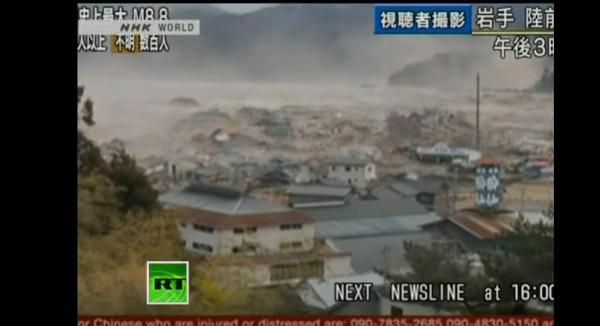By Staff Reporter, | October 17, 2016

The Earthquake in Japan
On 23rd September, a 6.5 magnitude struck from the east coast of Japan's Kanto region to the southeast of Tokyo. The US Geological Survey also reported of an earthquake with the same magnitude.
Japan's Meteorological Agency reported of slight sea level changes, especially in the coastal regions. It seems the epicenter was located in the Pacific Ocean, around the southern Chiba Prefecture. While no damage was reported, the probability of sea level changes was mentioned.
Like Us on Facebook
According to weather agency, the depth of the temblor seems to be 10km under the sea. The quake measured 1 on the Japanese seismic scale peaks at seven, the weather agency reported.
The weather agency did not issue any advisory or tsunami warning due to the quake. The quake also showed as 1 on the scale around Nagano, Shizuoka, Gunma, Ibaraki, Fukushima, and Miyagi prefectures.
There has been a recent rise in earthquakes, both offshore and onshore regions of the Kanto area, located on the main island of Honshu. This landlocked area is neighbor to Saitama Prefecture and borders the Pacific Ocean, some northeast of Tokyo.
According to seismologists, the fault system around the areas known as the Median Tectonic line, which is Japan's longest has recently seen increased activity. Starting from in Ibaraki Prefecture, the active fault system lies 3km below the ground level according to Xinhuanet News.
As per Channel News Asia, Japan is located at the juncture between four tectonic plates. As a result, the country experiences comparatively violent quakes every year. However, with strict enforcement of construction codes and rigid construction, even strong tremors do less damage to the country compared to other countries.
In April this year, two severe earthquakes hit the southern part of Japan, which caused 1700 aftershocks trigggering widespread damage and the deaths of at least 50 people.
In March 2011, a massive undersea earthquake created a tsunami and hit the northeast coast of Japan, causing severe damages to the three reactors at the Fukushima nuclear plant into meltdown and with a death toll of over 18000 people.
The increased activity around the fault system has raised concerns among some semseismologists.
-
Use of Coronavirus Pandemic Drones Raises Privacy Concerns: Drones Spread Fear, Local Officials Say

-
Coronavirus Hampers The Delivery Of Lockheed Martin F-35 Stealth Fighters For 2020

-
Instagram Speeds Up Plans to Add Account Memorialization Feature Due to COVID-19 Deaths

-
NASA: Perseverance Plans to Bring 'Mars Rock' to Earth in 2031

-
600 Dead And 3,000 In The Hospital as Iranians Believed Drinking High-Concentrations of Alcohol Can Cure The Coronavirus

-
600 Dead And 3,000 In The Hospital as Iranians Believed Drinking High-Concentrations of Alcohol Can Cure The Coronavirus

-
COVID-19: Doctors, Nurses Use Virtual Reality to Learn New Skills in Treating Coronavirus Patients







